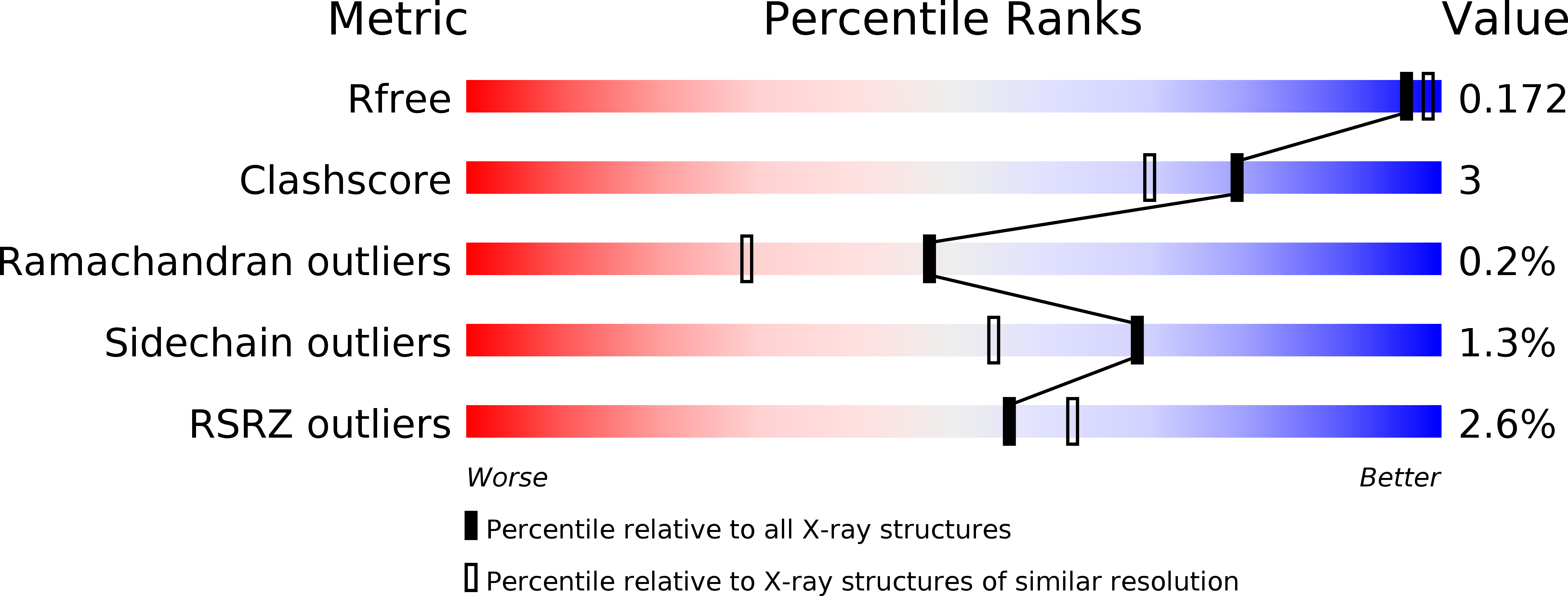
Deposition Date
2014-04-25
Release Date
2015-03-18
Last Version Date
2023-09-27
Entry Detail
PDB ID:
4PEX
Keywords:
Title:
Structure of the E502A variant of sacteLam55A from Streptomyces sp. SirexAA-E in complex with glucose
Biological Source:
Source Organism:
Streptomyces sp. SirexAA-E (Taxon ID: 862751)
Host Organism:
Method Details:
Experimental Method:
Resolution:
1.75 Å
R-Value Free:
0.17
R-Value Work:
0.14
R-Value Observed:
0.14
Space Group:
P 1 21 1


